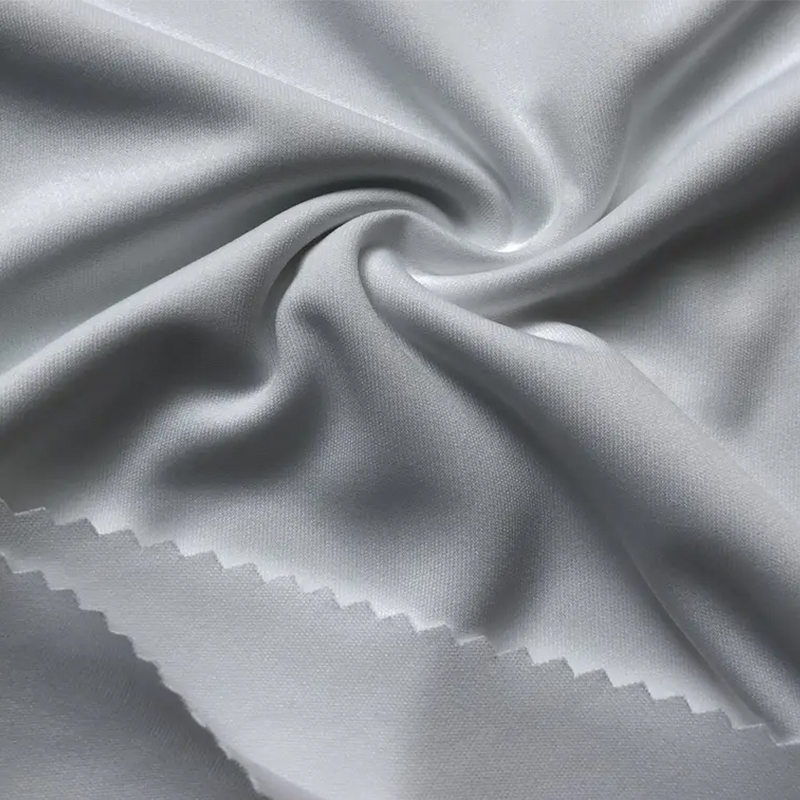The antistatic performance of all polyester microfiber mobile phone lens screen dust-free cloth is primarily reflected in its surface characteristics, which play a crucial role in reducing static buildup and ensuring effective cleaning of delicate surfaces such as mobile phone screens and camera lenses. This performance is attributed to several key factors inherent in the material and structure of the cloth.
First, the fine denier and tightly woven structure of polyester microfiber significantly minimize the generation of static electricity. Microfibers are extremely thin, with diameters much smaller than human hair, and their dense arrangement creates a surface that naturally limits the movement of free electrons, which are responsible for static charge accumulation. As the cloth comes into contact with a surface, this structure helps to disperse any existing static electricity, reducing the likelihood of dust and particles being attracted back to the surface after cleaning.
Secondly, the soft, smooth texture of microfiber contributes to its antistatic properties. Unlike rougher or more abrasive materials, the smooth surface of the microfiber cloth minimizes friction when used on sensitive electronic screens. Friction is a common cause of static electricity, but the design of microfiber helps to reduce this effect. This ensures that when the cloth is used to clean screens or lenses, it does so without generating a noticeable static charge, thus preventing dust from clinging to the surface after cleaning.
In addition, many polyester microfiber dust-free cloths are treated with special antistatic coatings or finishes. These treatments are designed to further enhance the material’s inherent antistatic capabilities, providing an added layer of protection against static buildup. Such coatings work by altering the surface conductivity of the fibers, allowing any residual static charge to be dissipated quickly and effectively. This treatment makes the cloth particularly suitable for use in static-sensitive environments, such as around electronic devices or precision instruments.
Another important surface characteristic is the high surface area created by the microfiber’s many tiny filaments. These filaments increase the cloth’s capacity to pick up dust, dirt, and oil without relying on static attraction. Instead of attracting particles through a static charge, the microfiber physically traps them within its fibers. This not only ensures effective cleaning but also helps to prevent the cloth from generating or holding onto static charges that could later interfere with the cleanliness of the surface.
Finally, the low linting property of polyester microfiber is a key reflection of its antistatic performance. Traditional cloths or materials may shed fibers or lint during cleaning, which can carry static charges and make it more difficult to achieve a truly dust-free surface. In contrast, microfiber is designed to be lint-free, meaning that it leaves no debris behind that could contribute to static buildup or dust attraction. This makes it ideal for cleaning high-precision surfaces, where maintaining a dust- and static-free environment is critical.
The antistatic performance of all polyester microfiber mobile phone lens screen dust-free cloth is reflected in several surface characteristics, including its tightly woven structure, smooth texture, antistatic treatments, high surface area, and low linting properties. These features work together to minimize static electricity, ensure thorough and effective cleaning, and maintain the integrity of sensitive surfaces, making polyester microfiber an excellent material choice for cleaning electronic devices.

Fabric composition: 100% polyester
Craft: knitting
Number of needles: 40 needles
Yarn thickness: 50D
Regular weight: 100GSM
Color: pink, yellow, blue, green, gray, white and black
Sold in rolls: 18-20kg per roll
Support customization
The dust-free cloth is double-woven with 100% polyester fiber. It has a soft surface and is especially suitable for wiping sensitive surfaces. It will not remove fibers and has excellent water absorption and cleaning effect. All cleaning and packaging processes are completed in the ultra-clean workshop. Optional edge sealing methods include cold cutting, laser edge sealing and ultrasonic edge sealing, while microfiber lint-free cloth usually uses laser or ultrasonic technology for perfect edge sealing.
100% polyester microfiber mobile phone lens screen dust-free cloth has excellent dust removal effect and anti-static function. Has efficient water absorption properties.Its softness prevents it from damaging the surface of objects. Provides sufficient dry and wet strength for long-lasting use.Has low ion release. Not easy to cause chemical reactions.
how to use 100% polyester microfiber mobile phone lens screen dust-free cloth:
Always wear dust-free gloves and a mask when using and unpacking.
The lint-free cloth can be dipped in solvent and wiped, or it can be used directly, which is convenient and flexible.
When wiping, fold the four sides of the dust-free cloth inward to avoid using the edges to contact the surface of the wipe.
When using high-end dust-free cloth, the inner packaging bag needs to be opened in a clean environment. Be sure to clean the packaging bag before unpacking, especially keep the opening clean and tidy.
During operation, keep the lint-free cloth flat and avoid rubbing. When moving and wiping, make sure the cloth is in complete contact with the wiping surface and keep wiping in one direction to avoid repeating it back and forth.














